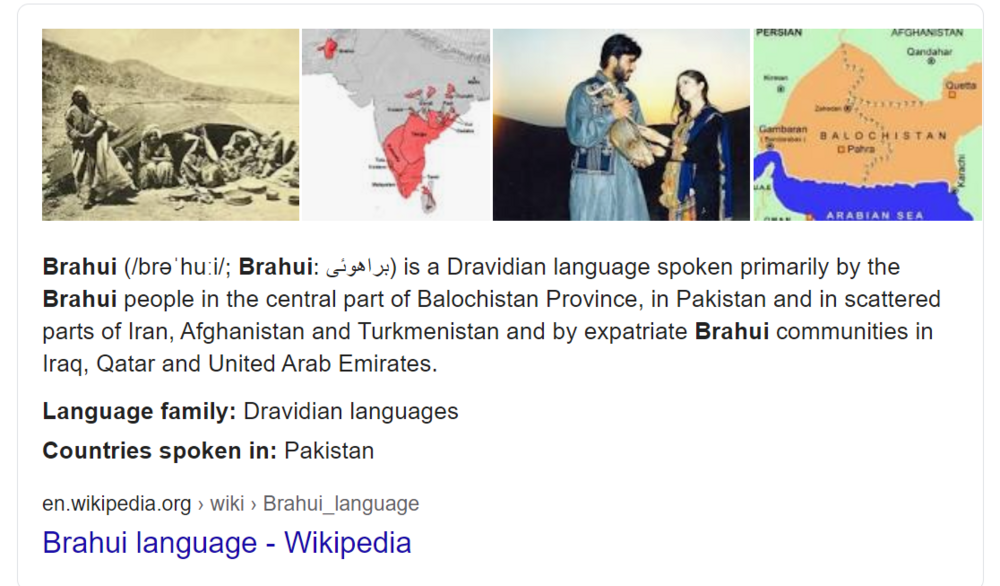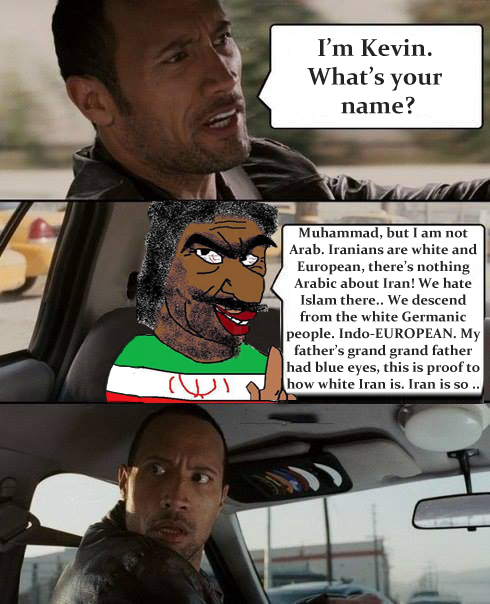Deleted member 4671
mentally crippled by lonely teen years
- Joined
- Jan 8, 2020
- Posts
- 9,585
- Reputation
- 13,569

Curries are literally the biggest mutts jfl
Follow along with the video below to see how to install our site as a web app on your home screen.

Note: this_feature_currently_requires_accessing_site_using_safari

Dravidian languages literally did not exist before Indus is what I’m trying to say. The Dravidian languages themselves were bought by Iranian invaders. Many scholars do suggest that the Indus language which remains in deciphered may have been Proto-Dravidian.
You could call it “the Dravidian invasion” of India.
The biggest evidence we have is the name of the Indus civilisation in Sumerian. Its called “Melukkhha”. The Sanskrit word for a Dravidian/barbarian is “Mlechha”. At the same time in Tamil, the word “Mlaccam” means “Highland Country”. Very interesting details imo you should read the Wikipedia page on Mleukkha
IMO the genetically closest people of Ancient Dravidian are the Brahui in Pakistan who are Pakistani but speak a Dravidian language. These are the unmixed ones that remained somehow while the other Proto-Dravidians left to the South where they further mixed with AASI people and bred them out.
And Iranian farmers were not very light skinned, they were brown-ish, so the resulting product would’ve looked like a dark subcontinental. Keep in mind modern Iranians have substantial Indo-European input so that’s why they are much lighter than ancient Iranians.
The Native Indian Hunter Gatherers by that I mean the AASI people. The languages of these people are extinct and even they themselves are extinct in their pure form and got bred out by Iranians farmers and Aryan nomads. The same thing happened to Hunter Gatherers in Europe getting bred out by Yamnaya R1b Chads.
Brutal tbh
how bout i just rob you? @brbbrah you down for this money bhai?I had an Iranian friend. He had so many rugs at home. He showed me one rug and said it cost 30k usd. Jfl. If u want to rob an iranian just take their rugs
over for iraniancelsdravidian bbcs can't be low t iranian cum eaters
I’m broke niggahow bout i just rob you? @brbbrah you down for this money bhai?
@NordicIranian you called ethnics shitskin despite being a tranny white cum guzzling kuk

then i'll just kill you tbh, @brbbrah mirin evil warlow?I’m broke nigga
Cope ill kill you before u even have a chance. Home advantage mogsthen i'll just kill you tbh, @brbbrah mirin evil warlow?
cope, my video of me sending you to gandy heaven will get posted on hoodsites then shown in an off-topic thread and i'll get many reactsCope ill kill you before u even have a chance. Home advantage mogs
I'm mahamad indo-european iranian kangz
keep coping. What actually happens is me headshotting u and selling ur organs on the black market to fund my lefort 3. Thanks for helping me ascend and slay bhai. Ur sacrifice was not in vaincope, my video of me sending you to gandy heaven will get posted on hoodsites then shown in an off-topic thread and i'll get many reacts
cope even harder. I will actually do a home invasion while your mother prepares your incel breakfast and go on a 4 killstreak, headshotting you, your mother, your sister, and the dog that fucks your sister. Then i'll take a selfie with bodies and post it in the sucesss section.keep coping. What actually happens is me headshotting u and selling ur organs on the black market to fund my lefort 3. Thanks for helping me ascend and slay bhai. Ur sacrifice was not in vain
says the shitskin third worlder living in his makeshift cow dung hut. This mentally ill terrorist is non stop barking for my attention!! You won’t do any of those u weak aids ridden dog. I know you are pissing yourself even thinking about me (your master)cope even harder. I will actually do a home invasion while your mother prepares your incel breakfast and go on a 4 killstreak, headshotting you, your mother, your sister, and the dog that fucks your sister. Then i'll take a selfie with bodies and post it in the sucesss section.
lifefuel: I just funded my bimax

KEEP HUH REACTING ME YOU TRAUMATISED VICTIM. WHAT PART ABOUT IT DO YOU NOT UNDERSTAND?? I AM HAPPY TO ELABORATE MY PLANS TO TORTURE AND RAPE YOUR WHOLE FAMILY. JUST LET ME KNOW, U ABUSED SUBHUMANcope even harder. I will actually do a home invasion while your mother prepares your incel breakfast and go on a 4 killstreak, headshotting you, your mother, your sister, and the dog that fucks your sister. Then i'll take a selfie with bodies and post it in the sucesss section.
lifefuel: I just funded my bimax
YOU THINK I AM SERIOUS!!!?? U REALLY THINK I WILL COMMIT MASS GENOCIDE IN ANOTHER COUNTRY?? U CAPPING HARD BRUHView attachment 760307
This incel actually thought i was serious jfl. I'm not iranian, arab, or curry for that matter. How do you not understand banter, jfl at your incel rage,
that easy to make you mad eh? Funny asl
elab tbh, what's on the mind of my incel brother today?KEEP HUH REACTING ME YOU TRAUMATISED VICTIM. WHAT PART ABOUT IT DO YOU NOT UNDERSTAND?? I AM HAPPY TO ELABORATE MY PLANS TO TORTURE AND RAPE YOUR WHOLE FAMILY. JUST LET ME KNOW, U ABUSED SUBHUMAN
personality as being aspects of a higher concept and as illusory. The late Indian monist came to see nature as something unreal—an evil dream. The only reality for him is the world soul (Brahman) and its eternal reoccurrence in the individual soul (Atman). With this turning away from nature in general, the once clear idea and concept of race became ever hazier. Philosophic dogma uprooted instinct from its earthly basis. If the only reality is the world soul, and if Atman is essentially one with it, then individuality vanishes and an undifferentiated universal oneness is achieved.WE WUZ IRANIANZ N SHIEET?